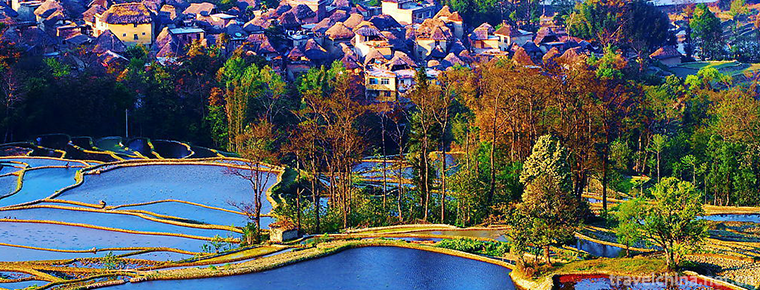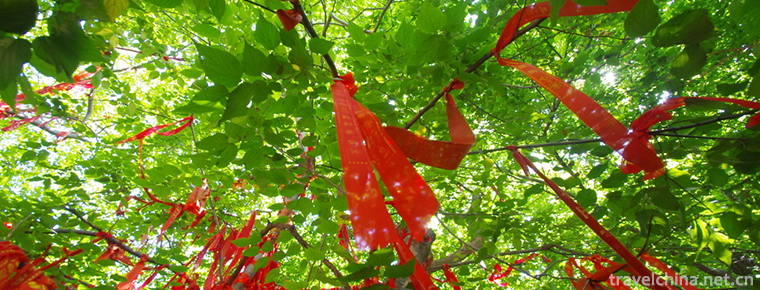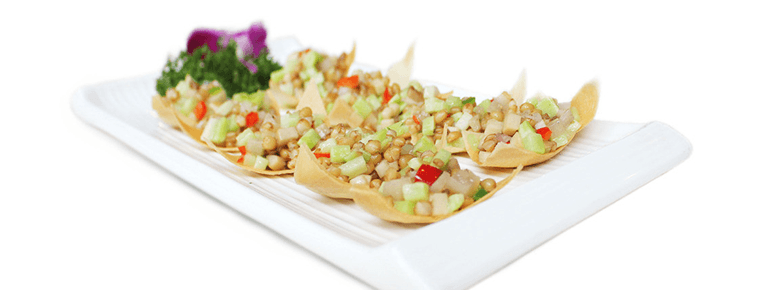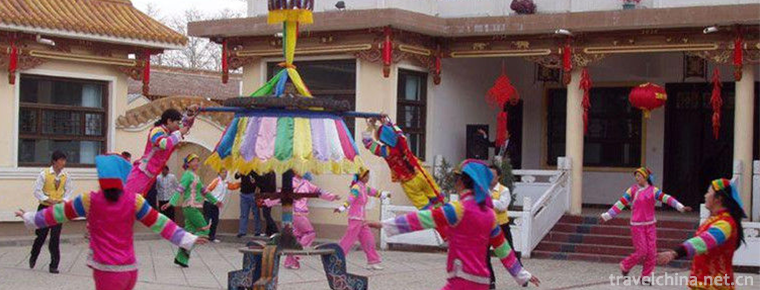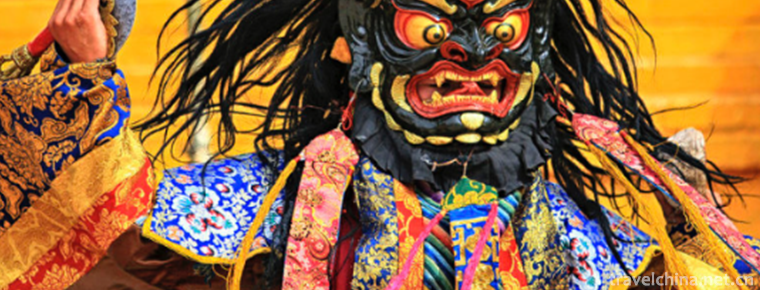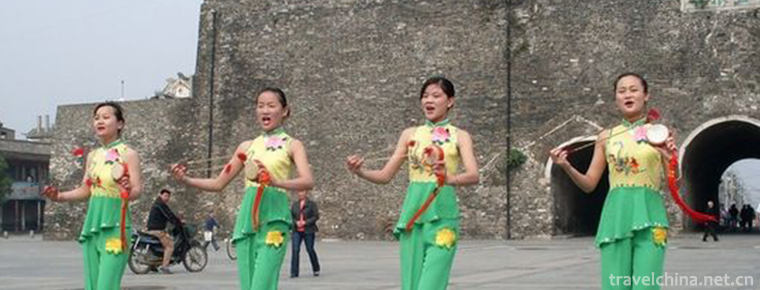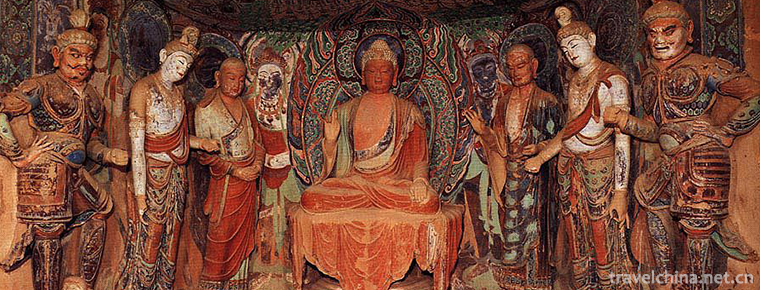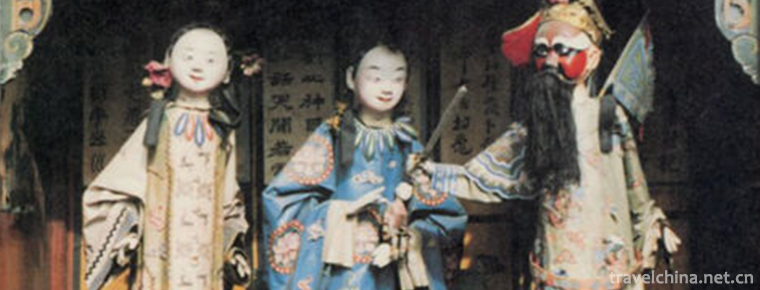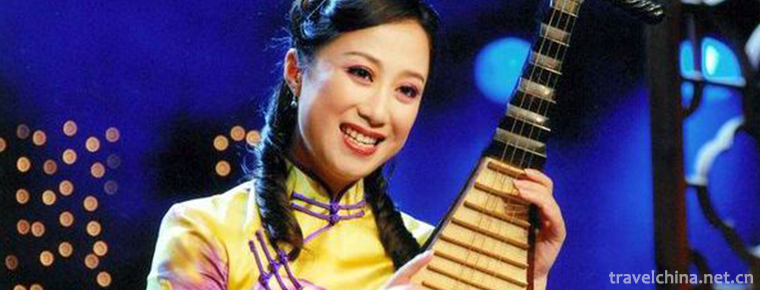Bi Sheng
Bi Sheng
Bi Sheng (about 971 years to 1051) was promoted to Hubei, Huanggang, Hubei. Yingshan County One of the great inventors of ancient China, the inventor of the five great ancient inventions of ancient China, was the inventor of "movable type printing", one of the four great inventions of ancient China. The invention of movable type printing was more than 400 years earlier than the German Gutenberg invented the metal movable type printing.
Paul Mauriat's History
Bi Sheng (about 971-1051) was born in Qishui County, Qizhou, Huainan Road, Northern Song Dynasty, and invented movable type printing in Song Renzong's Qingli years. The invention of Bi Sheng movable type printing is a great revolution in the history of printing. Four great inventions of ancient China One of them has opened up a broad road for the development of Chinese culture and economy, and has made a significant contribution to the development of world civilization.
The early method of printing is to print pictures and engraving on wooden boards and print them with ink and ink. Today, the wooden board watermark is still used by this method. woodblock printing "
Bi Shengchu is a printing shop worker who specializes in manual printing. In his printing practice, he knew the difficulties of engraving printing, conscientiously summed up his predecessors' experience and invented movable type printing. Shen Kuo's method Mengxi pen conversation There are specific records.
From thirteenth Century to nineteenth Century, movable type printing invented by Bi Sheng spread all over the world. People all over the world call Bi Sheng a great revolutionist in the history of printing. About Bi Sheng's life story, and his invention of the movable type version, besides Shen Kuo's record in the book "Mengxi Bi Tan", there were no second documents.
Shen Kuo only said he was a cloth man, and his native place and life had not been explained at all. The so-called "cloth" is literally understood by ordinary people who have never been officials. There has been a lot of speculation about Bi Sheng's career before, but the most reliable claim is that Bi Sheng should be a craftsman who works in woodblock printing. Because only those who are familiar with or skilled in engraving can become inventors of movable type editions. Owing to Bi Sheng's longstanding engraving work, he found the biggest shortage of engraving.
The point is to re engrave a copy of every book, not only for a long time, but also to increase the cost of printing. If you use the movable type version, you only need to engrave a movable type, then you can print any book, and the movable type can be used repeatedly. Although the work of making movable type is larger, it is very convenient to print books later. It was under this revelation that Bi Sheng invented the movable type version.
From Mengxi Bi Tan, we can see that Bi Sheng's letterpress printing is not groundless, but is based on previous printed books. The description of the process of letterpress printing is also an important asset for the study of future generations.
In 1990, Bi Sheng monument was found in Bijia Ao, five Gui Village, Yingshan, Hubei.
Main achievements
Bi Sheng invented the invented glue type and wood movable typesetting, which is the development of Chinese printing.
A fundamental reform is a scientific summary of the long term practical experience of the Chinese working people and a great contribution to the cultural exchanges between China and other countries in the world.
Before that, only copying, rubbing and engraving printing were cumbersome, laborious and time-consuming. They were not only difficult to store, but also difficult to correct. The movable type printing method invented by Bi Sheng is simple, flexible and convenient. The procedure is as follows: first, use the glue to make a single word with uniform specifications, burn it hard with fire, make it become a movable type of clay, then classify it in wooden frame, and usually use several words to spare several or dozens of words, so as to prepare for typesetting. When making typesetting, use a piece of iron plate with a frame as bottom support, and apply a layer of mixture made of pine resin, wax and paper ash, then pick up the needed glue from the spare wooden frame one by one, and put it into the frame, then fill it up to become a version, then use the fire to bake. When the medicament is slightly melted, it will flatten the tablet with a flat plate. After the medicine is cooled and solidified, it will become a version. When printing, just brush the ink on the plate, apply the paper and add some pressure. After printing, use the torch to bake and gently shake. The movable type of the glue will fall off the iron plate and be reused next time.
Methods: the blank with uniform specifications was made from glue, and the reverse word was engraved at one end. The height of the word protuberance was the same as the thickness of the edge of the copper coin. It was hardened by fire and became a single type of glue. In order to meet the needs of typesetting, there are usually several or even dozens of commonly used words, so that they can be used in duplicate in the same edition. If you encounter unfamiliar words, if you are not prepared, you can follow them. In order to facilitate picking, put the glue in the wooden grid according to the rhyme classification and label it with a strip of paper. After typesetting, pick up the needed glue and put them into the box one by one. Fill up a box and become a version, then use fire to bake.
Bake, wait for the medicine to melt slightly, use a flat plate to flatten the literal, the medicine cooling and solidifying, then become the version. When printing, just brush the ink on the plate, cover the paper and add some pressure. In order to be able to print continuously, two iron plates, one version of the brush and another version of the two edition are used alternately. After printing, use the torch to bake and gently shake with your hands. The movable type can be dropped off the iron plate, and then put back into the original wooden frame according to the rhyme, so that it can be reused next time. Bi Sheng also experimented with wood type printing. Due to the uneven density of wood grain, difficult fabrication, the deformation of wood movable type after being washed, and the difficulty of separating them from the chemicals, Bi Sheng did not use it.
Bi Sheng's glue moved first to North Korea, called "tao yao character". The stereotyped printing in the Tang Dynasty was very popular in China and spread to Korea, Japan, Vietnam, Philippines, Iran and other countries in thirteenth Century. In fifteenth Century, the movable plate was sent to Europe. In 1456 ad, Gordon fort, Germany, used movable typeface to mark the fort Gordon, the first movable type printed in Europe, four hundred years later than the movable type printing in China. Movable type printing was rapidly spread to other more than 10 countries after Germany, prompting the Renaissance. In sixteenth Century, movable type printing was passed to Africa , America , Russia Moscow was introduced into Australia in nineteenth Century.
Anecdotes
Bi Sheng unreservedly introduced his invention to his younger brothers and sisters. He first made delicate clay into small squares, carved convex back words one by one, burned them with fire, and placed them in wooden lattices in accordance with finals. Then put a binder (rosin, wax and paper ash) on a piece of iron plate, and print it out one by one in accordance with paragraphs, and then round the iron frame and heat it with fire. When the adhesive is slightly cooled, flatten the plate with a flat plate and cool it completely. After printing, burn the plate with the fire, melt the adhesive, remove the movable type, and save the next typesetting.
Teachers and brothers could not help but praise. A little brother said, " Tripitaka "More than 5000 volume, carved 130 thousand boards, a room can not be loaded, how many years of painstaking efforts! If you use your brother's method, you will be able to finish it in a few months. Brother, how did you come up with such a clever way? " "My two sons taught me!" Bi Sheng said. "Your son? How can it be? They will only "get married."
"You are right! This is the way to get married. Bi Sheng smiled and said, "before last year's Tomb Sweeping Day, I brought my wife and children back to their hometown to worship their ancestors. One day, the two sons played with each other, and made clay pot, bowl, table, chair, pig, and man with their clay. My eyes suddenly lit up. At that time, I thought, why don't I come to play with the family? Ha-ha! Isn't this what my son taught me?
The brothers also laughed. "But this family has been played by all the children. The brothers have seen it. Why is it that you invented movable type printing?" Or the little brother asked. After a while, the master opened his mouth: "in your teacher's brother, Bi Sheng is most ambitious. He has long been thinking about new ways to improve work efficiency. It's not a cold day. " "Oh!" The brothers of the division burst into tears.
Kinship members
Wife: Li, the magic name.
Son: Bi Jia, Bi Wen, Bi Cheng, Bi Rong
Sun Tzu: Bi Wenxian, Bi Wenbin and Bi Wenzhong.
Character Memorial
A burial
Bi Sheng is the inventor of movable type printing, one of the four great inventions of ancient China. However, the only historical record of Bi Sheng is the four words in Shen Kuo's Mengxi Bi Tan: Bai Yi Bi Sheng. For thousands of years, Bi Sheng's identity has always been a mystery.
In the autumn of 1990, a tombstone was excavated at the foot of the sleeping lion mountain in five GUI Dun village, Yingshan County, Hubei province. According to the textual research, it was the tombstone of Bi Sheng. 3 kilometers west of the cemetery is Bijia shop, and the Xiao Jia Da house, one kilometer south, is handed down by Bi Zai Xiang, and fifteen kilometers east.
Bi Sheng Forest Park
Yingshan Bi Sheng Forest Park is located in Wenquan city. It is the last peak of the middle branch mountain in the main peak of the Dabie Mountain. It is also the highest point in the middle branch of the city. The park is in the east of the science and technology finance and Trade Development Zone, the South Wang Hong Nan economic corridor, the West leading industrial zone, the north and the cloud mountain tea park, the park is only 1 kilometers away from the Wu Ying highway, the existing forest area of Bi Sheng Forest Park is 8500 mu, the new repair park has 9.8 kilometers of circular roads, and 31 pavilions are built. Among them, the statue of Bi Sheng, the Bi Sheng Memorial Hall, the open-air Buddha and the cock amusement park have already received tourists. "Bi Sheng" We are exploring the expansion of the culture of the garland temple, the newly built movable type promenade, the antique District, the zoo, the park hotel, and the improvement of service facilities to build a famous garden in Eastern Hubei.
Bi Sheng Avenue
In the 90s of last century, Bi Sheng was identified as five GUI Dun village in Yingshan County by archaeological experts. In order to remember and commemorate Bi Sheng and carry forward Bi Sheng culture, Yingshan county invested about 5000000 yuan to build Bi Sheng Park and Bi Sheng Memorial Hall under the support of the state and Hubei provincial cultural relics department. A number of roads, bridges, squares, restaurants, schools, products and enterprises named after Bi Sheng mushroomed. Bi Sheng Avenue (6 lanes) is about 3900 meters long, from South Chong fan, and finally Bi Sheng Avenue, via Bi Sheng square, Bi Sheng middle school, etc. Today, Bi Sheng has become the pride of the local people in Yingshan.
Film drama
In the early 90s of last century, a grass-roots cadre in Yingshan County of Hubei discovered an ancient tombstone. In January 10, 2015, the theme of the documentary is the mystery of Bi Sheng's tombstone. A press conference was held in Beijing. The movie was first broadcast on January 16, 2015 at 21:59 on the CCTV science and education channel (CCTV10).
In September 2009, Bi Sheng, the famous Huangmei Opera actor Yu Ying, Cheng Cheng, who was choreographed by the Huangmei opera troupe of Yingshan County, participated in the seventh Huangmei Opera Festival of Hubei Province, and won 9 awards.
In late December 2014, the great original Huangmei Opera "movable type Bi Sheng", a famous Huangmei opera performance artist and Chinese Drama Plum Blossom Prize winner Zhang Hui, starred in the Huanggang cultural and Arts Center. This drama is another highlight of the Hubei Huangmei Opera theater after the Dongpo, Li Siguang and Li Shizhen, once again taking Huanggang's cultural celebrities as the theme.

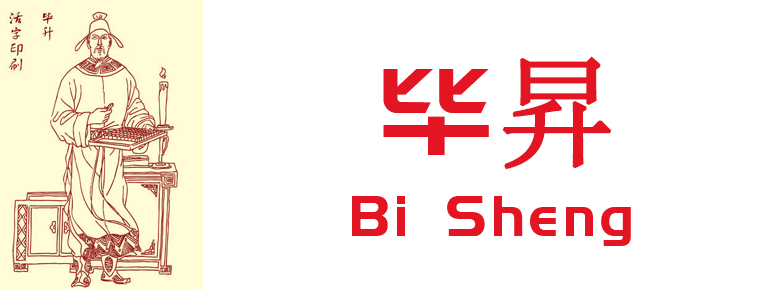
-
Wan fo Lake Scenic Area
Wanfo Lake is located in Shucheng County, central Anhui Province. It is a national AAAAA tourist area..
Views: 244 Time 2018-12-08 -
Hani terrace Yuanyang terrace
Yuanyang Terrace, located in the south of Ailaoshan Mountain in Yuanyang County, Yunnan Province, is a masterpiece left by the Hani people from generation to generation. Yuanyang terrace is the core a.
Views: 117 Time 2019-01-13 -
Tsing Tan Temple
Qingdan Temple is located 3.5 kilometers west of Fucheng, Zaozhuang City, in the narrow valley of Chu and Han Mountains. It was built in the Tang Dynasty..
Views: 192 Time 2019-02-07 -
Sea cucumber with eight treasures
Babao sea cucumber is a traditional dish in Yichang City, Hubei Province. "Babao" means ham, hoof tendons, chicken, winter bamboo shoots, shrimp, mushrooms, lotus seeds and water chestnut; i.
Views: 158 Time 2019-03-25 -
Yasuaki
Anzhao is an ancient Tu dance. It's popular with mutual aid. When celebrating festivals, harvest celebrations and weddings, people gather in the courtyard or on the wheat threshing ground to dance the.
Views: 186 Time 2019-04-02 -
Tibetan drama
The Tibetan name of Tibetan opera is "Aguiram", which means "fairy sisters". According to legend, Tibetan opera was first performed by seven sisters. The content of the opera is mo.
Views: 135 Time 2019-04-05 -
Fengyang folk songs
Fengyang folk song is a traditional folk song in Anhui Province. Fengyang folk song in Fengyang flower drum is one of the important components of Fengyang folk song.
Views: 207 Time 2019-04-29 -
Clay sculpture
Clay sculpture, commonly known as "color sculpture" clay sculpture art, is an ancient and common folk art in Chinese folk tradition. That is to say, a kind of folk handicraft made of clay mo.
Views: 139 Time 2019-06-07 -
Pingyao Shage Player
Pingyao Shage Opera, commonly known as Shage Renren, also referred to as Shage, is one of the traditional handicraft techniques in Pingyao, Shanxi Province. Because it was usually placed in the cabine.
Views: 230 Time 2019-06-09 -
Quyi
Quyi is the general name of all kinds of "rap art" of the Chinese nation. It is a unique art form formed by the long-term development of folk oral literature and singing art. According to in.
Views: 159 Time 2019-06-11 -
Kangding yak meat
There are many wild medicines such as Fritillaria, Cordyceps and so on growing in these areas over 3500 meters. Yaks often eat these herbs, and their meat is incomparably delicious. After being killed, they can be roasted in brown sauce, stewed or dried in the cold.
Views: 201 Time 2020-12-06 -
The evolution of Guangyuan
Guangyuan was ruled by Yin state in Xia Dynasty and Ju state in Zhou Dynasty. At that time, the state of Ju was in a state of tripartite confrontation with the states of BA (governing Chongqing) and Shu (governing Chengdu)..
Views: 300 Time 2020-12-15

